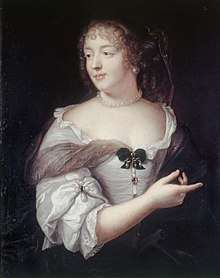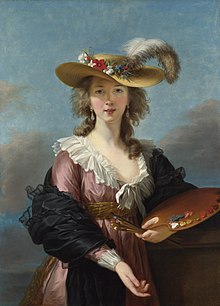This article includes a list of references, related reading, or external links, but its sources remain unclear because it lacks inline citations. (August 2011) |



Women letter writers in early modern Europe created lengthy correspondences, where they expressed their intellect and their creativity; in the process, they also left a rich historical legacy.
Over time, a large number of women's correspondences have been made the subject of publications. Some among them ignored the literary value of these missives that were sometimes circulated by their recipients. Some correspondences were, on the other hand, strictly private and their literary value—and historic value, as well—was not revealed until the rediscovery of these letters, perhaps long after the death of their authors, as in the case of Élisabeth Bégon, whose correspondence was not discovered until 1932 in the archives of the French Ministry of the Navy.
It is usually agreed that what makes these letters distinctive emanates from their spontaneity. Marie de Sévigné was the incarnation of this quality, to the point of becoming considered by many as the archetype of the woman letter writer, and an altogether literary author, even among her contemporaries, such as Suzanne Curchod:
It is this precious collection that seems to flow into the reputation of all women: because it is always repeated, ever since Madame de Sévigné, that women write better than men and that they feel things more delicately than them. Suzanne Curchod
In 1669, the famous Letters of a Portuguese Nun appeared, presented as a translation of five letters sent by a Portuguese nun to a French officer. For a long time, these letters were accepted as authentic letters written by Mariana Alcoforado, before being definitively shown by a modern critic to be a work of literary fiction, attributed to Gabriel de Guilleragues.
Some women who wrote letters did not lead remarkable lives. For instance Nellie Weeton was born in Lancashire and she was poorly treated by her brother and husband. She copied all the letters to her brother into journals and because some of these are extant they supply an insight into life in her time.[1]
The frontier between reality and fiction becomes blurry between literature and correspondence, above all when novelists turned this writing technique into a literary device that would become the epistolary novel, a genre that reached its peak during the Enlightenment when writers tried to persuade readers that between their hands was a real correspondence, which is what Jean-Jacques Rousseau more or less achieved with Julie, or the New Heloise.
- ^ Coen, Susie (2016-11-20). "Mystery of Liverpool Georgian woman's life uncovered by new book". Liverpool Echo. Retrieved 2023-01-23.